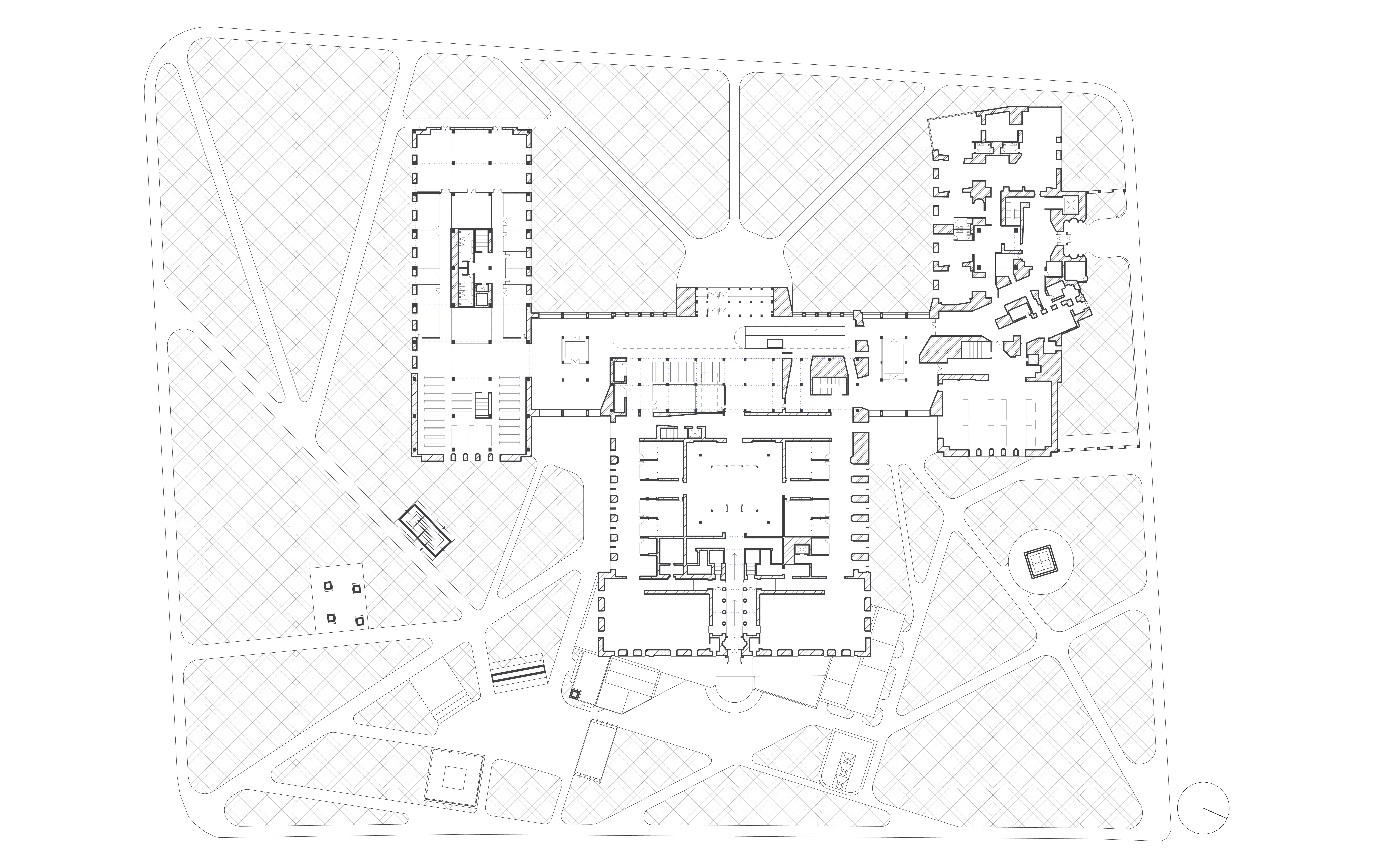PROFESSOR
IAN DONALDSON
STUDIO
STACKED SPACE
This studio asked students to cast aside nostalgia to critically consider the scale and premise of the Main Branch of the Detroit Public Library. Students worked to rethink civic institutionality today to reconsider the library of the future, breaking down typological orthodoxies. By STACKing, layering, carving or sculpting we will organize future spatial possibilities into/through/onto the existing library framework as a new civic morphology.
The public library of today has evolved beyond its typological role as a repository of knowledge. The Detroit Public Library already engages a mission that was once the primary purview of a variety of social services. In Detroit, access to public services and resources in proximity to the city center needs protecting. However, there is intense pressure on this institution as 17 of 21 library branch face closure, further reducing access to public space in a city paradoxically littered with open space.
Through this systemic analyses of precedents, libraries but also inventive cultural institutions, students built a body of research and established a critical lens with which to view the Classical Cass Gilbert building and speculate a radical transformation of the building and site. The final projects position questions of value creation, universal access, 'expanded sustainability' and resilience to the commercial tranformation marching out from Downtown Detroit.
︎︎︎BACK ︎
JULIA MCMORROUGH
Elliot Smithberger
Ruiying Zhang
MATIAS DEL CAMPO
Dowdle, Ibrahim, Zhang Fahmy, Kamhawi, Pandey
IAN DONALDSON
Gort-Cabeza de Vaca
Anahita Mojahed
DAWN GILPIN
Sang Won Kang
Xin Li
PETER HALQUIST
Chung-Han (Joanne)
Chengdai Yang
PERRY KULPER
Ghassan Alserayhi
Eilís Finnegan
ANN LUI
Will Kirsch
Kendra Soler
STEVEN MANKOUCHE
Stephen Corcoran
Aric Reed
NEAL ROBINSON
Connor Tuthill
Eduardo Villamor
JON RULE
Richard Hua
Qianwei Zhang
CHRISTIAN UNVERZAGT
Siyuan (Elaine) Cheng
Vance Smith Jr
KATHY VELIKOV
Emma Powers
Brian Smith
STUDENT WORK
IVAN GORT-CABEZA DE VACA
“DETROITS LIBRARIAN’S COMMUNE”
This project is made up of three interventions: garden follies, poche intrusions and an armature. It undermines the library as a monumental object through inhabitation- literally, in the new housing situated in the north wing, but also by new architectural languages which range in influence, style, and purpose. It positions the library as a ground for new social orders, standing as a 'subversive monument’, undermining existing orders through its remaking. In this way, the project seeks to unmake, reinterpret, and remake the logic of the existing building. It posits that the central problem of the historical building is that it has not been allowed to change.









